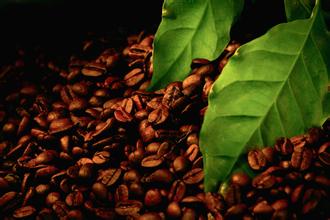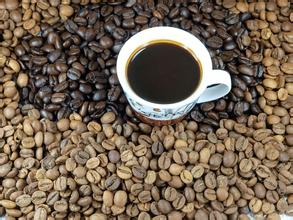Introduction of Puerto Rican Coffee Flavor Manor with Pure, aromatic and heavy granule
In 1898, the Spanish-American War broke out and Spain was defeated. According to the Treaty of Paris, Puerto Rico was ceded to the United States. The administrative jurisdiction of the United States over Puerto Rico first took the form of a military junta. During its two years of governance of the island, the junta established schools, roads, railways, hospitals and health facilities. In 1900, the United States Congress established civilian control over the island. One of the two chambers of the Governor, the Cabinet and the Puerto Rican legislature is appointed by the President of the United States. Puerto Ricans elect another chamber of the legislature and a commissioner based in the capital who will represent the interests of the island in Washington and have a voice but no vote in Congress. Puerto Ricans are also exempt from United States taxes.
In 1917, the United States Congress passed the Jones Act, imposing "American citizenship" on the people of Puerto Rico.
In 1937, the Puerto Rican people were the leader of the Kuomintang of Puerto Rico P. Alvisu Campos launched an independent uprising in Ponsai, but was suppressed again.
In 1947 the United States Congress allowed the Governor to be elected.
On November 1, 1950, Puerto Rican national heroes Oscar Corazo and Grace Torres Sola failed to assassinate the president of the United States, and other Puerto Rican nationalists opened fire in the hallway of the House of Representatives, injuring several members of the House of Representatives.
On October 30, 1950, the people of Puerto Rico rebelled again and declared the establishment of the Republic of Puerto Rico, which failed on the 31st and more than 100 people were arrested.
In 1952, the United States granted Puerto Rico the status of a free federation and exercised autonomy, but important departments such as foreign affairs, defense and tariffs were still controlled by the United States. [2]
Since 1972 the United Nations Special Committee on Decolonization has repeatedly reaffirmed the inalienable right of the people of Puerto Rico to self-determination and independence.
In 1977, US President Gerald Rudolph Ford submitted the Puerto Rico statehood Act 1977 to Congress, advocating that Puerto Rico should be turned into the 51st state of the United States.
In November 1982, President Ronald Wilson Reagan issued a statement supporting Puerto Rico as a state of the United States.
In Spanish, Puerto Rico means "port of wealth". The history of coffee in Puerto Rico dates back to 1736, when coffee seedlings were brought into the country by early Spanish settlers. In the 18th world, sugar cane was the main economic crop, so little attention was paid to it. At the beginning of the nineteenth century, the French began to emigrate from the Corsica island in the Mediterranean to Puerto Rico because of European politics. Crowded by the Spaniards, many French settled in Yaoke Yauco in southwestern Puerto Rico. Yaoke's geographical environment is more hilly, so the French decided to grow coffee. After half a century of hard work, the quality has been affirmed by the market, which has established the position of Yauco Selecto coffee in the market in the future.
In the 1860s, the coffee produced in the Yaoke area of Puerto Rico won the reputation of high-end coffee and spread all over Europe. At that time, emperors and queens of various countries regarded it as the best coffee, and the kings and queens of many countries and European popes even recognized only Yaoke coffee when they chose coffee. And designated for the Vatican to drink the royal coffee. Island Coffee-Puerto Rico
Puerto Rico's coffee beans are carefully planted, pure, fragrant and heavy, of which the best coffee is Yauco Selecto, which means "Selecto". Yaocote Coffee is grown only on three farms in the southwest of the island, San Pedro, Caracolillo and La Juanita. It is a truly high-quality coffee with a strong flavor and a long aftertaste. The hills of southwestern Puerto Rico have a mild climate, a long period of plant maturity (from October to February) and high-quality clay. People here have been using an eco-friendly, intensive planting method, picking only fully ripe coffee beans and then flushing them in a drum device for 48 hours. Yaocote selected coffee beans are preserved with sheepskin before sale and will not be removed until order and delivery to ensure the best freshness of the coffee. Relevant U.S. government employees, such as FDA and USEA, will also be present at the transaction, and they are here to monitor producers' compliance with federal regulations. There are also professional reviewers who randomly take one bag of coffee from every 50 bags as samples and use international gauges to identify the quality of coffee beans, all in order to ensure the quality of the real Yaocote selected coffee.
Island Coffee-Puerto Rico
And Jaime Fortuno, the president of Escoki's Escogido Yauco agency, pays silent attention to all this work every year, even the smallest details. Fortuno is an investment banker who graduated from Harvard Business School. He was determined to seize every opportunity to open up a market for top coffee in Puerto Rico. He expects a maximum annual output of 3000 bags of 45kg each, less than 1 per cent of the island's total coffee production.
This is the reason why Puerto Rico and Puerto Rico Yukot select Yauco Selecto differently. Yukot chooses manor beans, which is the joint brand of Puerto Rico San Pedro, Caracolillo and La Juanita.

Important Notice :
前街咖啡 FrontStreet Coffee has moved to new addredd:
FrontStreet Coffee Address: 315,Donghua East Road,GuangZhou
Tel:020 38364473
- Prev

Introduction to the characteristics of Colombian Coffee Flavor Manor with light and silky taste
Colombia, located in the northwest of South America, is a beautiful country with a long history. Indians have lived on this land since ancient times. It was colonized by Spain in 1531 and gained independence in 1819. It was renamed in 1886 to commemorate Columbus, the discoverer of the American continent. Colombia has beautiful mountains and rivers, beautiful scenery, pleasant climate and four seasons.
- Next

Panamanian coffee
Panama is a small country located in the center of the American continent. The waters of the Atlantic and Pacific oceans flood its beaches. Panama is located at 9 degrees north latitude, the meeting point of the Central Mountains, where Mount Baru, one of the highest volcanoes in Central America, is located. Baru volcano has an altitude of more than 11400 feet, and the land around it is rich in nutritious and fertile soil, which is unique to Panama.
Related
- Detailed explanation of Jadeite planting Land in Panamanian Jadeite Manor introduction to the grading system of Jadeite competitive bidding, Red bid, Green bid and Rose Summer
- Story of Coffee planting in Brenka region of Costa Rica Stonehenge Manor anaerobic heavy honey treatment of flavor mouth
- What's on the barrel of Blue Mountain Coffee beans?
- Can American coffee also pull flowers? How to use hot American style to pull out a good-looking pattern?
- Can you make a cold extract with coffee beans? What is the right proportion for cold-extracted coffee formula?
- Indonesian PWN Gold Mandrine Coffee Origin Features Flavor How to Chong? Mandolin coffee is American.
- A brief introduction to the flavor characteristics of Brazilian yellow bourbon coffee beans
- What is the effect of different water quality on the flavor of cold-extracted coffee? What kind of water is best for brewing coffee?
- Why do you think of Rose Summer whenever you mention Panamanian coffee?
- Introduction to the characteristics of authentic blue mountain coffee bean producing areas? What is the CIB Coffee Authority in Jamaica?

